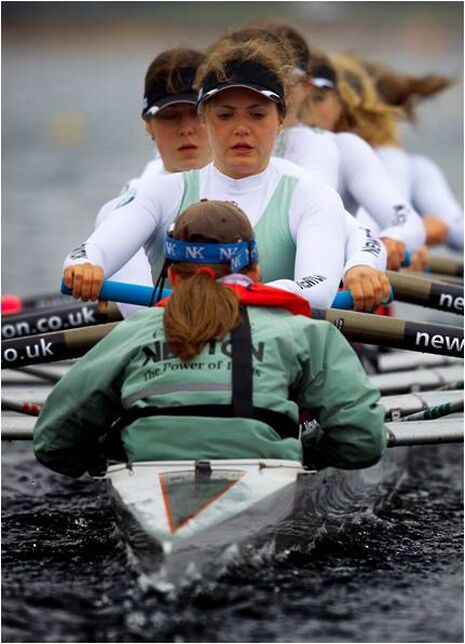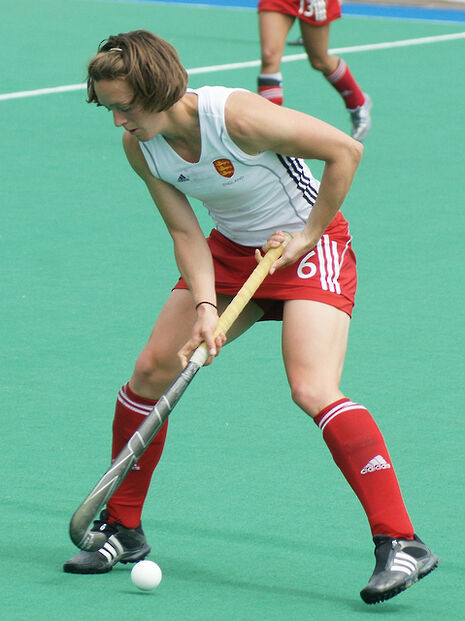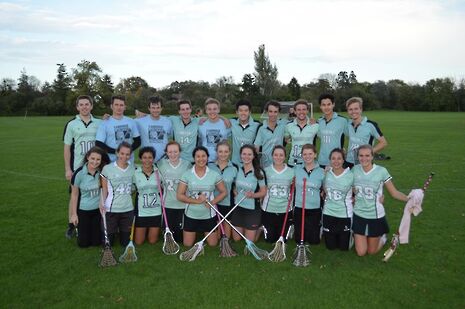Cambridge leads women in sport
Olivia FitzGerald looks at how Cambridge sport changes outdated perceptions
In a country in which female athletes receive 0.5 per cent of total sponsorship and form only 5 per cent of sports media coverage, I should be forgiven for initially thinking that I might have to convey a sense of frustration and gloom when writing an article about women in sport.
To start with, I picked up three national newspapers in my college bar and skimmed through the sports section, just as a one-off survey. There were no articles about women in sport and not a single photo of a female athlete.
However, I was pleasantly surprised when I looked into the situation in Cambridge. This year’s great success story is certainly sponsor Newton’s decision to provide the female boat club (CUWBC) with funding equal to that given to the men by BNY Mellon. The increase in funding has allowed the women’s squad to employ three full-time coaches and alleviate the stress caused by members having to contribute towards their travel and kit, which can lead to costs of more than £1,000 per year.
This not only allows athletes to concentrate on their training, but also makes the sport more accessible to those who might not otherwise have considered rowing due to financial hindrances.

In recognition of the increased respect and awareness gathering around the Women’s Boat Race, the 2015 event will be staged over the same course and on the same day as the men’s race. This shows just how far women’s sport has come; eighty years ago, a Selwyn rowing captain addressed a letter to CUWBC saying “I personally do not approve of women rowing at all. It is a ghastly sight, an anatomical impossibility and physiologically dangerous.”
Thankfully, this type of opinion appears to belong in the past, something supported by the comments of Erin Walters, this year’s Ospreys president: “I’d say that sportswomen at Cambridge are, for the most part, respected. We are a university that values accomplishment, and as university sportswomen, we carry that. As for myself, my experience as a sportswoman at Cambridge has been a very positive one.”
However, things are not perfect. A disparity in funding in other sports is an issue that places limits on Cambridge sportswomen. Unequal funding also sends out a negative message, suggesting that their efforts and achievements are not as valued by the university. Walters adds “I know girls who refuse to wear their sports kit to lectures, even if they are going straight to practice, for fear that academics and less-sporty peers will judge them.” This is not just a university issue, but is symptomatic of a cultural perception that strong, athletic women are unattractive.

Gradually, this perception is being worn down and Cambridge women are playing a role. On Monday, the Ospreys held their termly speakers dinner with guests such as GB hockey player Hannah Macleod and ‘Women Sport Trust’ trustee Kate Dobinson. Dinners such as this allow sportswomen to meet each other, appreciate their achievements, and be inspired to push themselves to the next level.
Mixed university and college teams have also played a significant role in bridging the gap between men and women on the sports field. These teams help to break down perceptions of certain sports as ‘men’s sports’ or ‘women’s sports’, and offer a casual, fun environment in which women can participate without being intimidated by either male teammates or the sport itself.

Mixed sport can be played at a competitive level, as demonstrated by mixed university teams such as badminton or lacrosse. Last year’s mixed lacrosse vice-captain, Fiona Latham, told Varsity about the growing importance of mixed lacrosse: “It became a half-blue sport last year, and the popularity of mixed sports and Varsity or league successes help change its image.”
The progress that has been made for women in sport at Cambridge is something in which the university can take pride. Such progress is surely recognition of the fact that good sport is good sport, and doesn’t have a gender.
Let’s hope that as Cambridge moves forward in providing equal sporting opportunities, the world outside the bubble can observe and follow suit.
 News / Local business in trademark battle with Uni over use of ‘Cambridge’17 January 2026
News / Local business in trademark battle with Uni over use of ‘Cambridge’17 January 2026 Comment / The (Dys)functions of student politics at Cambridge19 January 2026
Comment / The (Dys)functions of student politics at Cambridge19 January 2026 News / Cambridge bus strikes continue into new year16 January 2026
News / Cambridge bus strikes continue into new year16 January 2026 Features / Exploring Cambridge’s past, present, and future18 January 2026
Features / Exploring Cambridge’s past, present, and future18 January 2026 Comment / Fine, you’re more stressed than I am – you win?18 January 2026
Comment / Fine, you’re more stressed than I am – you win?18 January 2026








